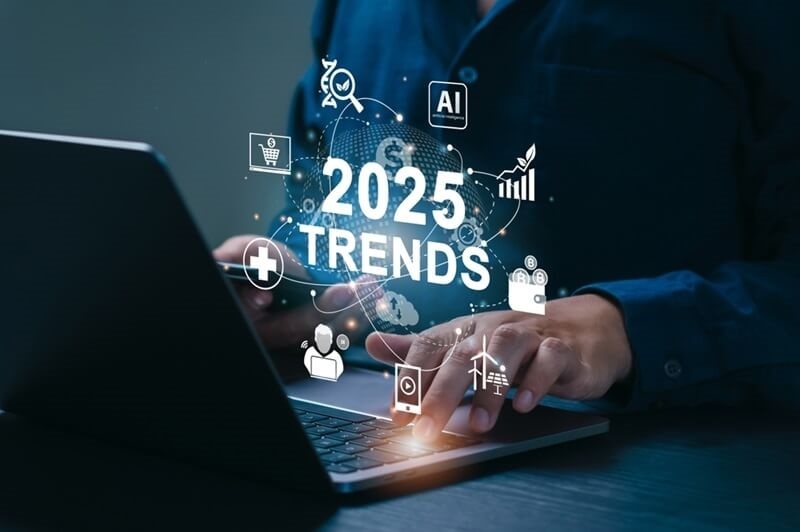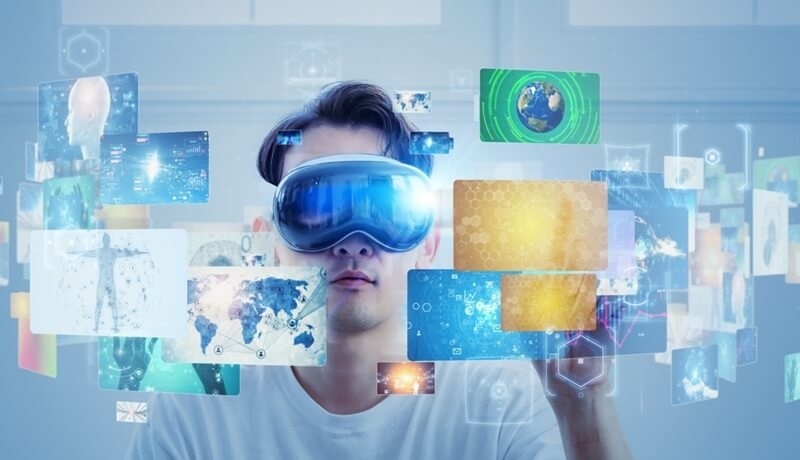
Technology is expanding more than before, and 2025 is set to be a year of competitive changes. Virtual interfaces and the growth of spatial computing comprise one of the most significant digital trends in the domain of 2025. These technologies of the future are getting into our daily lives and are making us interact with the digital world more naturally and immersively. Whether in-game, in hospitals, or classrooms, spatial computing and immersive technologies are making the biggest change in the way we perceive the digital world. Here, we can have a closer look at these strong trends, determining the future.
Moving in 2025, digital trends are evolving our lives, jobs and social connections. Smartphone and laptop are not the only tendencies, they are bringing something new to observe and touch the virtual reality.
Among the largest digital trends of 2025, we will find:
The trends are not only popular among tech enthusiasts, but they are already being utilized in business, healthcare, entertainment, education, and so on.
The main goal of these trends is to make technology more human-friendly. Instead of typing on screens or clicking with a mouse, people can now move their hands, speak, or even look in a certain direction to interact with digital content. This shift makes tech more natural, faster, and more immersive.

Spatial computing is a major driver of digital transformation in 2025. It mixes the physical world with digital data in a seamless way.
Spatial computing refers to the way computers interact with the space around us. Instead of working through screens and buttons, spatial computing uses sensors, cameras, and advanced software to understand your movements and surroundings.
For example:
Spatial computing is already being used in real life:
This makes spatial computing one of the most practical and exciting digital trends 2025 has to offer.
AR (Augmented Reality) and VR (Virtual Reality) have been around for years, but in 2025, they’re finally becoming mainstream. They are key parts of the immersive tech revolution.
Both are now more advanced and more affordable than ever before.
Thanks to better hardware, faster internet, and smarter software, AR/VR experiences are becoming:
The AR/VR evolution is making virtual experiences more enjoyable and useful for everyone.
Immersive technology is all about creating experiences that feel real—even when they’re entirely digital. It combines sight, sound, and sometimes even touch to create powerful, memorable moments.
Immersive tech includes:
These tools work together to bring you into the digital space like never before. It feels less like looking at a screen and more like being inside the digital world.
Immersive tech is used in many areas:
In 2025, immersive tech is everywhere, and it’s improving how we learn, work, and play.
While AR/VR and spatial computing make things feel more real, AI (Artificial Intelligence) is the brain behind the scenes. It helps systems respond smarter and faster to human actions.
Virtual interfaces replace traditional screens and keyboards. These include:
With AI, these interfaces understand context better. They can predict what you want to do and respond quickly and accurately.
AI-driven virtual interfaces can:
These technologies are no longer “coming soon”—they’re already becoming part of our daily routines.
While these digital trends are exciting, they also come with challenges.
With more sensors and cameras, privacy becomes a big concern. Who owns the data? How is it protected? Clear laws and rules will be needed to keep users safe.
Not everyone can afford AR/VR devices or has access to fast internet. Making these tools affordable and inclusive is important.
Being constantly connected through immersive tech can lead to digital fatigue. People will need to find balance and create healthy tech habits.
The digital world is becoming more interactive, immersive, and intelligent. Spatial computing, AR/VR evolution, and immersive tech are not just trends—they’re creating a whole new way to experience life.
These shifts are making the digital world feel closer, smarter, and more personal.
The digital trends 2025 are also preparing the way for a more human-oriented future. As we enter the era of spatial computing and the AR/VR evolution, the relationship that we have with technology is getting more natural and more potent. And it is not just about fun, but it is making education, healthcare, business, and the lives of people better. With such tendencies on the rise, this is the best moment to be educated about them, become familiar with them, and get ready to live in a world where the virtual world and the real world are merged.
This content was created by AI